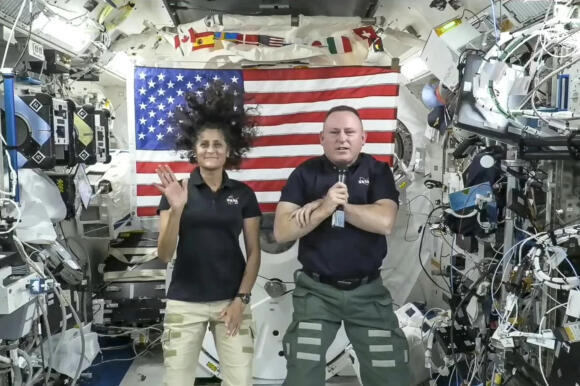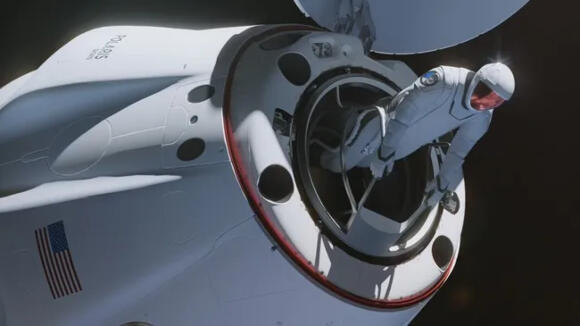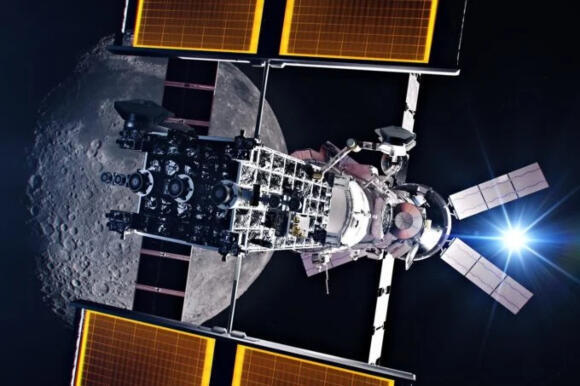Getting your Trinity Audio player ready...
A thousand sails for space-based internet
China launched 18 satellites last week as part of a massive low-orbit satellite constellation aimed at providing global internet communication, similar to SpaceX's Starlink network. The constellation is being developed by Shanghai Spacecom Satellite Technology (SSST), which raised nearly a billion dollars this year for the "Thousand Sails" (Qianfan) project.
In the first phase, the constellation is expected to include 1,296 satellites, with half expected to be in orbit by the end of next year. By the end of 2024, SSST aims to have 108 satellites in orbit. Ultimately, the mega-constellation is planned to include about 14,000 communication satellites, all of which are expected to be deployed by 2030.
For comparison, the American private network, spearheaded by SpaceX, currently operates approximately 6,000 communication satellites out of a planned 12,000, with SpaceX aiming to expand to over 34,000 Starlink satellites in the future. Five years following the launch of the first batch of satellites, SpaceX's network is estimated to generate more than $6 billion in revenue this year alone, according to analysts.
For context, the American private network, spearheaded by SpaceX, currently operates approximately 6,000 communication satellites, with plans to expand to 12,000. Future projections suggest an ambitious goal of over 34,000 Starlink satellites. Five years following the deployment of its initial satellites, SpaceX's network is estimated to generate over $6 billion in revenue this year alone.
SSST is not the only company in China to recognize the potential of satellite communication networks. The state-owned China Satellite Network Group is also planning to establish its own internet communication network soon, aiming to deploy a massive array of 13,000 satellites. Another private company, Landspace, intends to launch an array of over 10,000 satellites. To meet these ambitious goals, China will need to upgrade its launch capabilities.
Although several Chinese companies have entered the space and rocket industry in recent years, they have faced occasional setbacks. China announced at the beginning of the year a target of about 100 launches in 2024, a third of which are expected to be from the private sector. So far, it has completed only about 35 launches since the beginning of the year.
SSST's new communication satellites were launched from the Taiyuan space base in northern China on a Long March 6A rocket—a medium-sized rocket capable of carrying a payload of about 4.5 tons into a 700-kilometer orbit. The rocket was developed by the state-owned Shanghai Academy of Spaceflight Technology. It is a two-stage rocket with liquid fuel, supplemented by four solid-fuel boosters. Experts warn that the second stage is prone to disintegration in space, and debris falling from it increases the amount of space debris.
The Swiss company S2a, which specializes in tracking space debris, reported that such rockets left a trail of small debris in at least two launches, in March and July of this year. The source of the debris is unknown, and it may be insulation material or a protective coating that disintegrates in space. The global community has not yet addressed the issue, but if China follows through on its plans for numerous rocket launches, significantly increasing the amount of debris, the United States and other countries operating satellites and spacecraft will need to confront this growing concern.
18 satellites are the first of a planned 14,000 satellites, and merely one part of one of three constellations being developed by China.
The Qianfan satellites launch last week from northern China:
On hold at the Station
NASA has announced a delay in the scheduled crew exchange at the International Space Station (ISS) by at least one month, citing delays in completing the first crewed test flight of Boeing's Starliner spacecraft, which has been docked at the station for over two months.
SpaceX's Dragon spacecraft, which is supposed to carry the next crew of astronauts to the ISS, was originally scheduled for launch on August 18, but NASA announced this week that the launch will be delayed at least until September 24. “This adjustment allows more time for mission managers to finalize return planning for the agency’s Boeing Crew Flight Test currently docked to the orbiting laboratory,” NASA stated.
Boeing's spacecraft was launched to the station in early June, despite a helium leak in one of its thrusters. During the journey, additional leaks were discovered in several other thrusters, along with an issue in another engine. In a joint decision by NASA and Boeing, astronauts Sunita Williams and Barry Wilmore remained at the station while ground teams worked to identify the source of the problems. Recently, they conducted several tests of the spacecraft’s thrusters while it was docked at the station, but results have not yet been released.
Boeing announced last weekend that it has full confidence in the spacecraft's ability to safely return the astronauts to Earth, based on extensive tests and simulations conducted by its ground teams. Despite this, NASA appears hesitant to make a final decision, hoping that further tests and evaluations will help minimize any remaining uncertainties.
The space agency is even considering the possibility of having SpaceX return the astronauts aboard the Dragon spacecraft. This wouldn’t require an additional launch but would involve adding two seats to the spacecraft scheduled to bring the ninth crew to the ISS, with their return scheduled for the end of their mission in February 2025. This consideration may be one of the reasons for delaying the next crew launch until September.
3 View gallery


Extended mission - Came for eight days, have been waiting for two months, and might only return after eight months. Astronauts Wilmore and Williams at the space station last month
(Photo: NASA)
Private matters
SpaceX has announced August 26 as the target date for the launch of the Polaris Dawn mission, a pioneering private mission during which the first-ever "spacewalk" by private astronauts is expected to take place. The mission has already been postponed several times, with the new date, as usual, being announced in a tweet from the mission's account.
The mission crew includes Commander Jared Isaacman, the billionaire funding the program who also previously commanded the private Inspiration 4 mission; Scott Poteet, a former U.S. Air Force test pilot; and two senior SpaceX employees, aerospace engineer Sarah Gillis and biomedical engineer Anna Menon, who previously worked at NASA.
The mission is expected to last five days, during which the crew will conduct numerous experiments and perform various experiments, reaching an altitude of 1,400 kilometers—higher than any human has been since the Apollo program.
Polaris Dawn is set to be the first of three private missions under the Polaris program, with the third—still lacking an estimated launch date—intended to be conducted aboard SpaceX’s Starship spacecraft. This is the large spacecraft being developed by SpaceX for crewed Mars flights, lunar landings, and a range of Earth orbit missions.
3 View gallery


A private mission set to blur the boundaries between private and professional space missions. The spacewalk exit from the Dragon spacecraft
(Illustration: Polaris Program)
Challenged at the Lunar Gateway
A key component of the Artemis program, which aims to return humans to the Moon by the end of the decade, is a space station in lunar orbit. The station, called ‘Lunar Gateway’, is expected to support the program starting with the fourth mission. According to the current plan, the Orion spacecraft, which will bring astronauts from Earth, will dock at the station.
There, the astronauts will transfer to the lander that will take them to the lunar surface and back to the station at the end of their mission. During the first crewed missions, SpaceX’s Starship is planned to serve as the lander, with an additional lander from Blue Origin joining later.
This approach has several advantages: it enables the use of separate spacecraft for the journey to the Moon and the landing itself, and the station will serve as a platform for maintenance, refueling, and repairs of spacecraft designed specifically for lunar landings. However, a new report from the U.S. Government Accountability Office (GAO), suggests that the plan may need revising.
The report notes that SpaceX's Starship may be far too large for the Lunar Gateway. The report's authors state the planned mass of Starship is 18 times (!) more massive than a spacecraft deemed suitable for docking at the lunar outpost, far exceeding what the Gateway was designed to support. A spacecraft of such mass would pose challenges to maintaining the station's orbit, limit the ability to rotate the station to the desired angle and disrupt communication with it.
The report urges NASA engineers to find ways to circumvent the problem, noting that the problem could worsen if the station is used for Mars missions, which will require even larger spacecraft. Despite the concerning outlook for operating the station, which is projected to cost over five billion dollars, the GAO has not yet issued broad recommendations, merely suggesting that the agency consolidate all documents related to the station's mass calculations ahead of the next internal evaluation meeting on the station project.
3 View gallery


Unexpected challenges due to the size of the intended lander, which could drag the station itself to the lunar surface. Illustration of the Lunar Gateway space station in lunar orbit
(Illustration: NASA/Alberto Bertolin)

